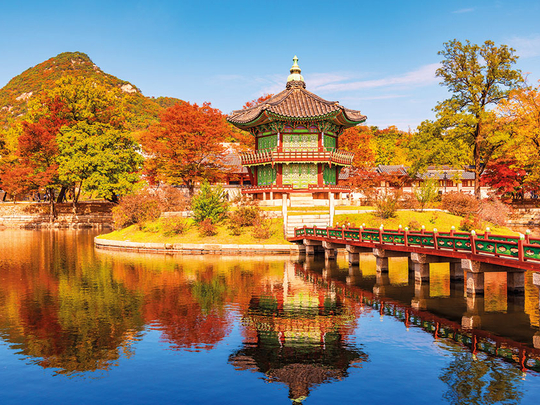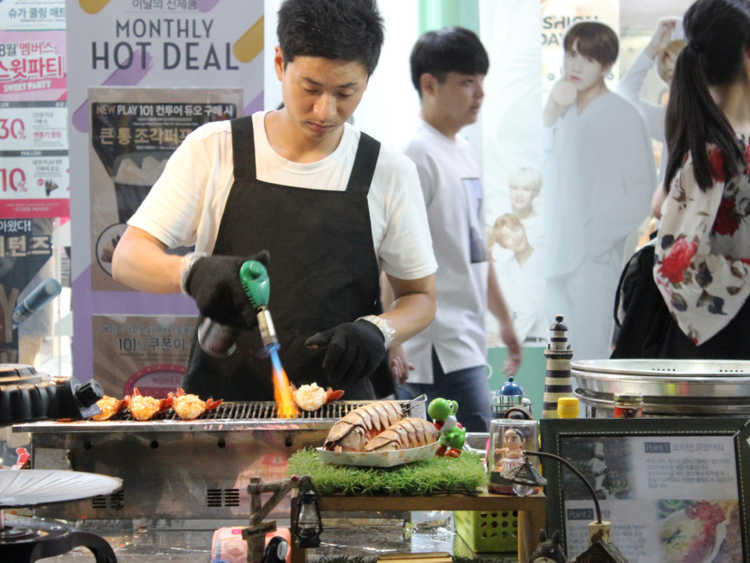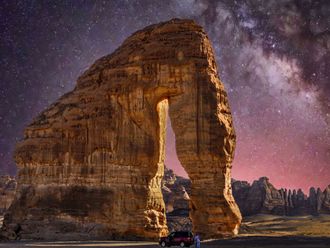
Why Korea? This was the standard reaction from most of my friends when I was planning a trip to Seoul. Why not? The country is rich in history and culture. It is also blessed with plenty of natural beauty.
The Land of Morning Calm, that is what they call South Korea. Much of Korea today remains picturesque, but it is more renowned for its bustling high-tech cities and thriving industries. It is also home to the teenage craze sweeping the world: K-Pop.
All these were lost on my friends.
The trip stemmed from my teenage daughter’s interest in K-Pop. To me, it presented an opportunity to visit the Demilitarised Zone (DMZ). I have always been enamoured by the fear and awe evoked by the DMZ, which was established as part of the armistice (there’s no peace treaty) to end the Korean War.
My interest was further stoked by the peace moves on the peninsula. Now that the war fears have receded, it was a good time to visit South Korea. A culture tour too was packed into the itinerary to learn of the heritage of Korea and savour its culinary delights. But my focus was the DMZ.
Only organised tours are allowed to the 257km Demilitarised Zone. An early morning drive along the Han River took us to the buffer zone at the 38th Parallel North in about an hour. Security checks, passport scrutiny and head counts followed. It was clear that we were entering a volatile area. We were in the DMZ, the world’s most heavily militarised border.
Imjingak Park was the first stop. It offered a sweeping view of the green expanse of temperate forests. The Imjin River ran through it, bisecting the Koreas. A crossing that spanned the river united the divided nations. The Freedom Bridge gleamed in the morning sun. It was the site of prisoner exchanges at the end of the war.
The war ended in 1953, but a hostile atmosphere prevailed. The Third Infiltration Tunnel, which is a mere 52km away from Seoul, was a grim reminder of the tensions. Discovered in 1978, it is big enough allow 30,000 armed soldiers to pass through in an hour.
A trip down the tunnel is not one for the claustrophobic and the asthmatic. The shaft narrows considerably with craggy walls as it reaches closer to North Korea. The path is so steep that the return trek makes for a good workout.
Despite the violent past, Koreans still harbour hopes of reunification. “End of separation, beginning of unification,” the words on the Dora Observatory encapsulate the pain and optimism of Koreans. After all, 10 million families were torn asunder by the conflict.
The Observatory is the nearest point to North Korea from the South. We could catch a glimpse of the border village in the North and the Gaeseong (or Kaesong) Industrial Complex. Barbed wire fences that cut a swathe through thick forests and rolling hills looked like a festering wound, reminding us of the horrors that lie beneath: landmines.
The Dorasan Station offered concrete proof of South Korea’s desire for reconciliation. The northern-most railway station has been readied to reconnect a people severed by the war. While the train to Pyongyang awaits the peace signal, we hit the road that wove past ginseng fields and bean farms back to the hotspots of Seoul.
Myeong-dong Street shone brightly with LED boards and neon lights. The premier shopping district was teeming with buyers and vendors. It’s a paradise for shopaholics. The street food looked irresistible, but fears of a stomach bug helped me fight off the temptations.
The culture tour turned out to be a fascinating experience. A visit to the National Folk Museum became an education in history and culture: the patriarchal system which places immense pressure on women to bear sons, traditional ceremonies following births, deaths and coming of age are all graphically retold. Much of Korea’s history resides in the precincts of Gyeongbokgung Palace, the seat of Joseon dynasty that made Seoul its capital. The palace still bears the scars of Japanese invasion and most of the burnt buildings were restored decades later.
A colourful Changing of Guard ceremony at the Gwanghwamun Gate rounded off our visit to the palace. That was the high point of the day’s trip that kicked off with a tour of the lotus-filled Jogyesa Buddhist Temple. The hot, muggy summer day sapped our energy. So, a trip to the Unesco World Heritage site of Changdeokgung Palace was struck off the tour.
It gave us the chance to enjoy some local delicacies. Our first attempt was great. Bulgogi was an inspired choice. Lots of salad and kimchi to go with the shredded grilled marinated beef. I steered clear of Bibimpap; the sticky glutinous rice is not for me. Instead, I opted for Beef Noodle Soup and Soft Tofu Stew. But I couldn’t try dishes I had in my mind — Ginseng Chicken Soup and Double Fried Chicken. Maybe, some other time. Right now, my taste buds are craving for some Indian masalas.
Yes, we hit the K-Pop trail but decided to forgo an obligatory trip to SM Town Atrium at COEX. A trip to Star Avenue in Eljiro was followed by some BT21 souvenir hunt at Line Friends store in Itaewon. “These are original,” my daughter gushed as we hurried to catch the Metro.
The Seoul Metro served us well. Despite the nine lines, we never missed a train, a station or a transfer. We hailed a taxi only once, on the first day. As a mass transit system, the Seoul Metro rocks.
We went to the Lotte World too. But it paled in comparison to the amusement parks in the UAE. We skipped the N Seoul Tower, knowing fully well that it is no match for the Burj Khalifa.
Did I miss anything? Yes, the cherry blossoms.
SEOUL SIGHTS
The DMZ: It includes Imjingak Park, Freedom Bridge, The Third Infiltration Tunnel, Dora Observatory and Dorasan Station. Not all tour operators do the Panjumon (Joint Security Area) Tour.
Gyeongbokgung Palace: The seat of Joseon Dynasty.
Changdeokgung Palace: The Unesco Heritage Site is the second palace of the Joseon Dynasty. Many kings used it as the principal palace.
Jogyesa Buddhist Temple: The head temple of the first district of the Jogye Order of Korea Buddhism.
Star Avenue: A must-see place, if you are a K-Pop fan.
SM Town Atrium at COEX: Another mandatory stop for a K-Pop fan.
Gwanghawmun Square: Statues of King Sejong and Admiral Yuri Sun Shin are located here. It also includes a memorial to Sewol ferry victims.
SEOUL FOOD 101
Kimchi: fermented vegetables
Bibimbap: A bowl of rice mixed with vegetables, beef, chili paste and a fried egg.
Bulgogi: Grilled marinated beef
Naengmyeon: Cold buckwheat noodles
Seolleongtang: Ox bone soup
Samgyetang: Ginseng chicken soup, Korean spicy fried chicken
HOW TO GET THERE
Emirates and Korean Air fly non-stop to Seoul and back every day.










